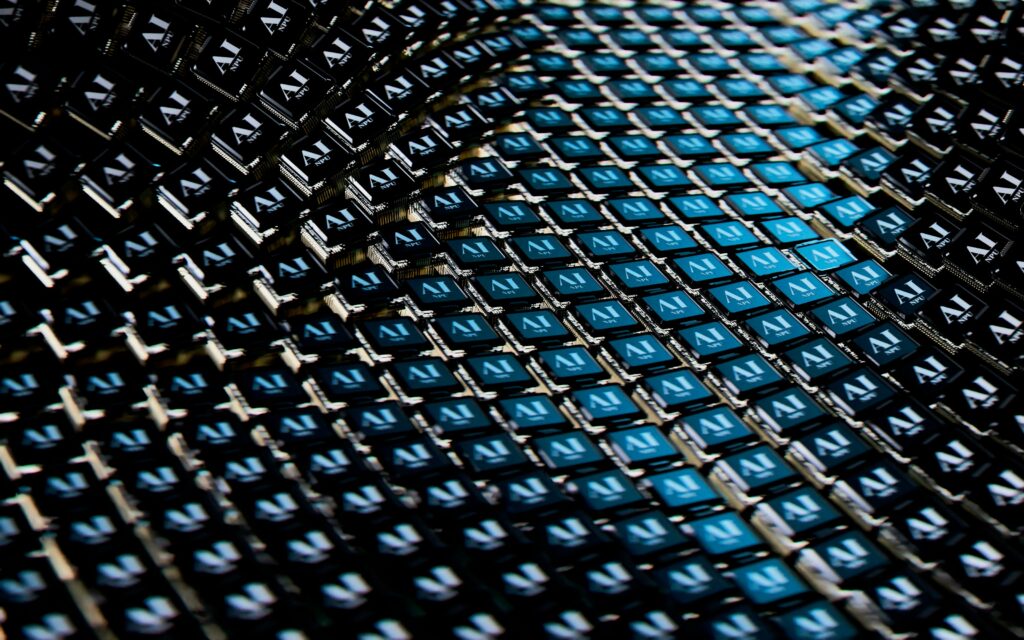Quantum Science: God’s surprising ally!
The United Nations has proclaimed 2025 as the International Year of Quantum Science and Technology (IYQ). In this essay I would like to highlight the cultural relevance of this proclamation by witnessing how quantum physics helps me as a believer and quantum physicist to an unspeakable enjoyment of God’s presence in the world we daily […]

The United Nations has proclaimed 2025 as the International Year of Quantum Science and Technology (IYQ). In this essay I would like to highlight the cultural relevance of this proclamation by witnessing how quantum physics helps me as a believer and quantum physicist to an unspeakable enjoyment of God’s presence in the world we daily experience.
Quantum Physics contains three big paradoxes: Entanglement, Schrödinger’s Cat, and Irreversibility. The Nobel Price of Physics 2022 was awarded to John F. Clauser, Alain Aspect, and Anton Zeilinger “for experiments with entangled photons and violations of Bell’s inequalities”. This Prize crowns a century of work on quantum entanglement, where many scientists have been involved, and is now leading to powerful technologies. Since I have directly contributed to this work, I will first try to explain this fascinating quantum feature in a generally understandable way.
We all have daily experience of remote control by means of radio signals: If I enter in my IPhone the number of your mobile hundreds or thousands kilometers far away, your mobile will ring, though not immediately but some milliseconds later. Communication by means of radio signals takes time: several seconds to reach the Moon and several minutes to reach Mars. I cannot guide the Perseverance Rover on Mars faster than light!
In a typical entanglement experiment a laser source S emits pairs of photons: one of the photons is guided by a glass fiber to Alice’s lab, and the other photon is guided by a glass fiber in the opposite direction to Bob’s lab.
In Alice lab the photon crosses a Choice Device (let us call it ACD), with two output ports, one watched by Detector A(1) and the other by Detector A(0). By leaving ACD a choice happens: the photon is counted either by A(1), and we register the outcome as result ‘1’, or by A(0), and we register the outcome as ‘0’. Similarly, on the side of Bob we have a BCD, with detectors B(1) and B(0), and corresponding outcomes ‘1’ and ‘0’. Things happen as if Alice and Bob were tossing corresponding fair coins in their labs, and noting ‘1’ when they get ‘Tails’, and ‘0 when they get ‘Heads’.
We set the distance between S and ACD equal to the distance between S and BCD, to a precision of some micrometers, so that we can be sure that there is no coordination by means of radio signals between ACD and BCD at the moment the detectors count the photons and the results become registered. In other words, it is as if Alice were observing the result on Earth, and Bob on Mars.
After many runs Alice has a long sequence of results like this:
1,0,0,1,0,1,11,0,0,0,1,0,1,0,1,1,1, …
She analyzes the sequence and observes 50% ‘1’, 50% ‘0’, no particular pattern. She concludes her apparatus behaves like a good random number generator: Randomness in Alice’s lab.
Same thing for Bob. Randomness in Bob’s lab.
Since there is no communication by radio signals between the two labs at the moment the results happen, one should aspect that 50% of the times Alice and Bob get the same result and 50% of the times different results.
Suppose now Alice and Bob come together, compare their results, and to their great surprise realize that in each run they get the same result: If Alice registered ‘1’, Bob registered ‘1’; if Alice registered ‘0’ Bob registered ‘0.
 Is such a thing possible?
Is such a thing possible?
YES! This is quantum entanglement, and has been demonstrated in hundreds of experiments.
Einstein called “quantum entanglement” a “spooky action at a distance” that “cannot be reconciled with the idea that physics should represent a reality in time and space”, the idea that the signals causing such correlated events should not propagate faster than light. Together with Boris Podolski and Nathan Rosen, Einstein wrote the famous EPR paper in 1935, arguing that quantum mechanics is incomplete, and the entangled particles behave the same way because they are emitted from the source like genetic twins who carry “genetic programs” (“hidden variables”) that in similar environments let them to react the same way.
The EPR paper did provoke a big controversy that remained undecided till the arrival of John Stewart Bell. John discovered a mathematical property, the so called “Bell’s inequalities” mentioned in the Nobel Prize announcement, that allows us to decide by means of an experiment between Einstein’s explanation and Quantum Mechanics. The discovery was published in 1964.
Since then many experiments have been done ruling out Einstein’s explanation by “hidden variables” or programs, and confirming that quantum entanglement is a real thing. This means: there are correlated events at a distance such, that any coordination by means of radio signals is excluded. Among these experiments are those awarded with the Nobel in 2022.
However, these experiments did not rule out the explanation that one of the results, say Alice’s one, can be considered the cause (before in time) and the other the effect (after in time). To rule this possibility, it is necessary to set the devices ACD and BCD in motion to create the relativistic configuration where the choice of the result in Alice’s lab, happens before the choice of the result in Bob’s lab, and the choice in Bob’s lab happens before the choice in Alice’s lab. With such a relativistic time-order, Alice’s result cannot take account of Bob’s result, and Bob’s result cannot take account of Alice’s result: consequently, the correlation between Alice’s and Bob’s results should disappear. This is the so called “before-before” experiment with moving measuring devices, that can be considered a completion of the conventional ones with devices at rest.
The inspiration for this experiment came to me during a Colloquium I organized with John Bell on 22nd January 1990, at the CERN in Geneva, to discuss the philosophical implications of his discovery (Bell’s talk and the following discussion are recorded in this video). Some months later a similar Colloquium could be repeated in Cologne (Germany), and this time among the speakers was not only John Bell but also Anton Zeilinger, one of the three winners of the Nobel Prize 2022 (the proceedings are published in this book). The discussions with both, John and Anton, strengthened my interest for the experiment.
In the following years, I became friend with Marcel Odier, a private banker of Geneva, who was enthusiastic about the experiment and ready to sponsor it. Sadly, John Bell died on October 1st, 1990. So Marcel and I travelled several times to Innsbruck to visit Anton Zeilinger, and had helpful discussions with him. In 1997 I could publish the experiment together with Valerio Scarani (see artile in PLA), and could eventually realize it in 2001 together with Nicolas Gisin, André Stefanov, and Hugo Zbinden in the Lab of Quantum Optics of the University of Geneva (see articles in PRL e PRA).
The experiment demonstrated that the quantum correlations do not disappear, and therefore ruled out an explanation by « causality in time », i.e.: the view that there is a cause-effect relationship between the correlated events.
 This has important implications for our understanding of space and time:
This has important implications for our understanding of space and time:
The correlated distant events build a single nolocal effect popping up (materializing) in the space-time, but the cause is beyond space and time. In other words, not all what matters for physical phenomena is contained in space-time. “Quantum correlations seem to come from outside the space-time” (Nicolas Gisin); “Space and Time are secondary constructions” (Anton Zeilinger).
The visible world where we live in and move, cannot be explained alone by means of visible, material, causal chains in space-time. We can’t help acknowledging invisible causes acting from outside space-time. “Correlations cry out for explanation!”, John Bell claimed. The entanglement experiments are undoubtedly stimulating our imagination and creativity in the sear for explaining what kind of beings this invisible causes are:
Nicolas Gisin asks whether we have to invoke Quantum Angels who keep track of the quantum register, “recording who is entangled with whom, similarly as one records who is married with whom”. Anton Zeilinger states that “mystic is an important approach on which we can build up”. John Conway and Simon Kochen propose to accept that the behavior of the entangled particles reveals the same freedom of choice the experimenters have.
At times, the interpretations quantum physicists convey look as eerie and contradictory. However, if you listen attentively and put together all what they are telling, you get a magnificent contrapuntal polyphony: The quantum realm is not made up of “material” particles or waves; rather, it is a mathematical description —a vast cloud of algorithms. The visible (material) world in which we live and move is a great calculation, processed actually by invisible supercomputing intellects that incessantly project the phenomena we perceive onto the screen we call space-time. Consciousness is the interface where the dialogue between these invisible (spiritual) intellects and us (neuronal intellects) unfolds.
At the occasion of the Noble Prize 2022, the “Technology Review”, a German magazine, has published an article illustrating the complementarity of Aspect’s experiments and the “before-before” one, and the journalist asks whether Religion and Science are entangled. My answer: I do not pretend that Quantum Physics demonstrates God. However, as a believer and a quantum physicist, I can witness that Quantum Physics helps me a lot to enjoy God, and God helps me to enjoy quantum physics!
Related

The Five (5) “C’s” of PonCe
Exaudi Staff
04 April, 2025
4 min

The Lies of Love: Debunking Myths and Rediscovering the True Meaning of Love
José María Contreras
04 April, 2025
1 min

Family and Mental Health: Parents’ Secret Superpower for Raising Happy Children
Laetare
04 April, 2025
3 min

Cardinal Arizmendi: Let Money Not Rule Us
Felipe Arizmendi
03 April, 2025
4 min
 (EN)
(EN)
 (ES)
(ES)
 (IT)
(IT)

